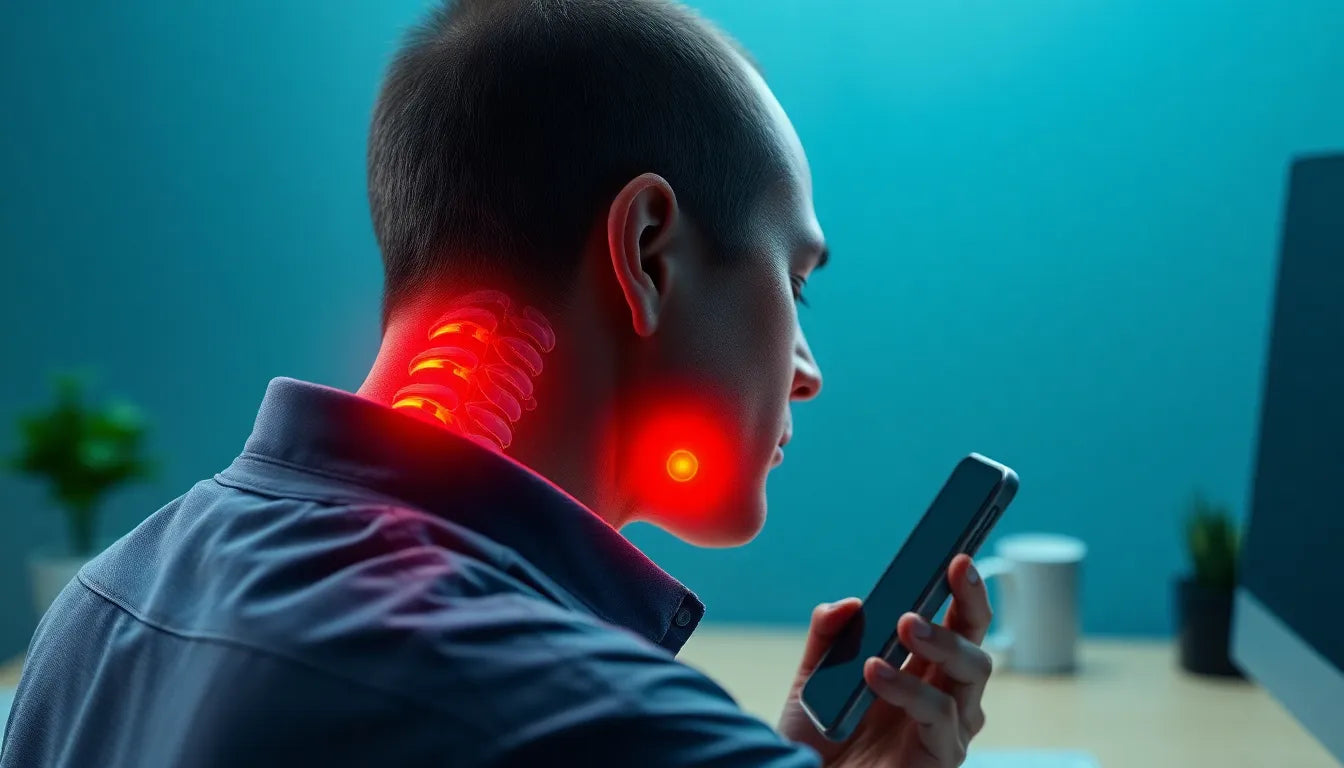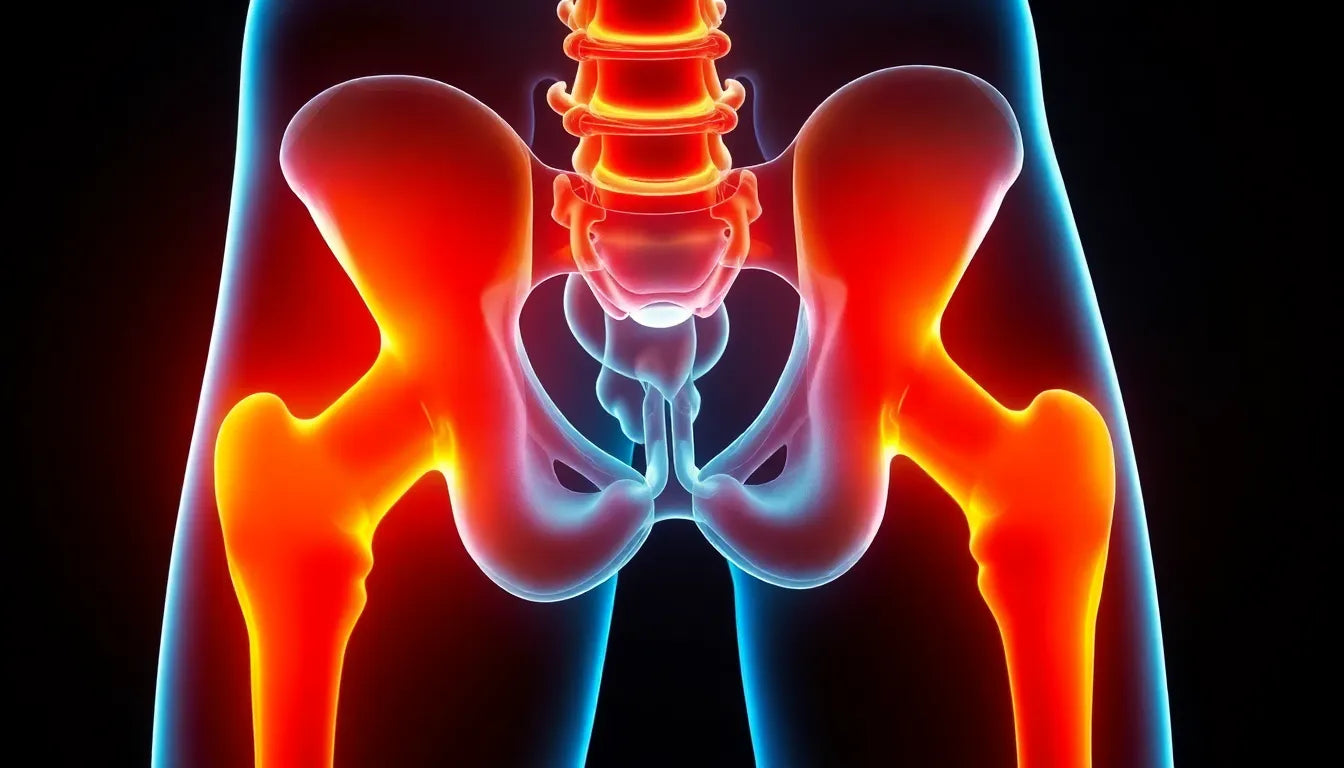Neck pain is a common ailment that affects a significant portion of the population in today’s fast-paced, digital-centric world. It is characterized by discomfort in the neck area, which can range from mild irritation to severe pain that limits mobility. With the increasing prevalence of sedentary lifestyles, prolonged computer use, and poor posture, neck pain has become a frequent complaint among individuals of all ages. Stress, another pervasive factor in modern life, also contributes to muscle tension and discomfort in the neck region.
Addressing neck pain promptly is crucial to prevent it from developing into a chronic issue that can significantly impact one’s quality of life. Chronic neck pain can lead to a decrease in productivity, affect mental health, and even cause disruptions in daily activities. Therefore, understanding the root causes and exploring effective treatments is essential for anyone experiencing this condition.
Exploring treatment options for neck pain
The treatment of neck pain encompasses a wide spectrum of options, ranging from simple self-care measures to more advanced medical interventions. This variety reflects the diverse causes and severity levels of neck pain, necessitating a personalized approach to treatment. For some, minor lifestyle adjustments and self-care techniques may suffice, while others might require physical therapy or even medical procedures to manage their symptoms effectively.
Self-care strategies often include improving posture, engaging in regular physical activity, and practicing stress-reduction techniques. These foundational steps can significantly alleviate neck pain and prevent future occurrences. Additionally, ergonomic adjustments in the workplace and at home can play a pivotal role in reducing strain on the neck muscles.

Men's Posture Shirt™ - Black
Activates muscles and may relieve neck, shoulder, and back pain; improves posture and comfort.
For those experiencing persistent or severe neck pain, professional treatments such as physical therapy, medications, and alternative therapies like acupuncture may be considered. Physical therapy, in particular, is widely recognized as a cornerstone of neck pain management, offering exercises and techniques that promote healing and prevent further injury.
As we delve deeper into the various treatment modalities, it is essential to emphasize the importance of a tailored approach. Each individual’s experience with neck pain is unique, and what works for one person may not be effective for another. Consulting with healthcare professionals to develop a comprehensive treatment plan is often the best course of action to ensure optimal outcomes.
Self-care and lifestyle adjustments for neck pain relief
One of the most effective ways to address neck pain is through self-care and lifestyle adjustments. A primary factor contributing to neck discomfort is poor posture, often resulting from hours spent hunched over computers or mobile devices. Correcting posture can significantly reduce strain on the neck muscles, alleviating pain and preventing future issues.
Posture correction tips
To maintain proper posture, keep your shoulders relaxed and aligned with your ears, and ensure your back is straight. When sitting, your feet should be flat on the ground, and your knees should be at a right angle. At work, position your computer screen at eye level to avoid tilting your head forward. Regular breaks to stretch and move around can also prevent stiffness and promote blood circulation.
Ergonomic workspace setup
Implementing ergonomic principles in your workspace can further reduce neck pain. Consider using an adjustable chair that supports the natural curve of your spine and a desk that allows for a comfortable arm position. Ergonomic aids such as monitor stands or laptop risers can help position screens at the correct height, reducing neck strain. These adjustments create a more supportive environment for your neck and overall posture.

Women's Posture Shirt™ - Black
Provides posture support and may relieve neck, shoulder, and back pain; designed for comfort and activity.
The role of physical therapy in neck pain management
Physical therapy is a cornerstone in the treatment of neck pain, offering a range of interventions that can provide relief and prevent recurrence. A physical therapist will typically assess your condition and develop a personalized plan that may include exercises, manual manipulation, and education on ergonomics.
Benefits of physical therapy
The exercises prescribed by a physical therapist often focus on strengthening the neck and shoulder muscles, improving flexibility, and enhancing posture. Manual manipulation techniques can help relieve tension and restore mobility. Additionally, ergonomic education empowers patients to make informed adjustments in their daily activities to minimize strain on the neck.
Stepwise approach to therapy
A typical physical therapy plan begins with an initial assessment to identify specific pain points and functional limitations. The therapist then tailors a program that progressively builds strength and flexibility, with regular follow-ups to adjust the plan as needed. This stepwise approach ensures that treatment is effective and sustainable over the long term.
Medications for neck pain relief
For many individuals, medications can provide significant relief from neck pain, especially when combined with other treatments. Over-the-counter (OTC) options like nonsteroidal anti-inflammatory drugs (NSAIDs) such as ibuprofen or naproxen, and acetaminophen, are commonly used to reduce inflammation and alleviate pain.
Over-the-counter options
OTC medications are often the first line of defense against mild to moderate neck pain. While effective, they should be used as directed to avoid potential side effects, such as gastrointestinal issues with NSAIDs. It is important to follow dosage recommendations and consult with a healthcare professional if pain persists.
Prescription medications
For more severe pain, prescription medications may be necessary. Muscle relaxants can help reduce muscle spasms, while nerve-modulating drugs, such as certain antidepressants or antiepileptics, may be prescribed for chronic pain. These medications require careful use under medical supervision due to their potential side effects and interactions with other drugs.
Heat and cold therapy for immediate relief
Heat and cold therapy are simple yet effective methods for providing immediate relief from neck pain. Cold packs can help reduce inflammation and numb sharp pain, while heat packs can relax tense muscles and improve blood flow to the affected area.
Application techniques
For acute pain, apply a cold pack wrapped in a cloth to the affected area for 15-20 minutes several times a day. After the initial inflammation subsides, heat therapy can be used to soothe any lingering discomfort. A warm towel or heating pad applied to the neck for 15-20 minutes can be beneficial. Alternating between heat and cold can also be effective in managing pain.
Overall, a combination of self-care, physical therapy, medications, and heat and cold therapy can provide comprehensive relief from neck pain. Tailoring these treatments to individual needs and consulting with healthcare professionals ensures the best outcomes for managing and preventing neck discomfort.
advanced medical treatments for neck pain
When neck pain persists despite self-care and physical therapy, advanced medical treatments may be necessary to provide relief. Among these options, injections and platelet-rich plasma (PRP) therapy are gaining attention for their effectiveness in managing chronic or severe neck pain.
injections for neck pain relief
Injections such as corticosteroid injections and trigger-point injections can offer significant relief for individuals suffering from persistent neck pain. These injections work by reducing inflammation and alleviating pain in targeted areas, providing relief that can last for weeks or even months. However, they are typically used in conjunction with other treatments like physical therapy to enhance overall effectiveness.
platelet-rich plasma (PRP) therapy
PRP therapy is an innovative treatment that involves using a concentration of the patient's own platelets to promote healing and reduce pain. This minimally invasive procedure is particularly beneficial for chronic neck pain resulting from injury or degenerative conditions. While still emerging, PRP therapy offers promising results with minimal risk of side effects, making it an attractive option for those seeking alternatives to surgery.
alternative therapies for neck pain
Alternative therapies such as acupuncture and chiropractic care can complement traditional treatments for neck pain. These therapies can provide additional relief and help manage symptoms, though it's important to consult with qualified practitioners to ensure safety and efficacy.
acupuncture and chiropractic care
Acupuncture involves the insertion of thin needles into specific points on the body to stimulate healing and reduce pain. Many individuals find acupuncture helpful in relieving neck pain, though results can vary. Chiropractic care, which includes spinal manipulation, can also provide short-term relief by improving joint mobility and reducing muscle tension. However, it's crucial to discuss potential risks and benefits with a healthcare provider before pursuing these treatments.
surgical interventions for neck pain
Surgery is typically considered a last resort for neck pain, reserved for cases where conservative treatments have failed, and there is significant nerve or spinal cord compression. Surgical options may include procedures to relieve pressure on nerves or stabilize the spine, but these are serious interventions that require careful consideration and consultation with a specialist.
transcutaneous electrical nerve stimulation (TENS)
TENS is a non-invasive treatment that uses low-voltage electrical currents to relieve pain. TENS devices can be used at home to block pain signals and promote the release of endorphins, offering temporary relief for some individuals. However, the effectiveness of TENS can vary, and it's advisable to discuss its use with a healthcare professional to determine if it's suitable for your condition.
frequently asked questions
what are the most common causes of neck pain?
Common causes of neck pain include poor posture, muscle strain, stress, and injuries. Sedentary lifestyles and prolonged use of electronic devices can also contribute to neck discomfort.
how can I prevent neck pain from recurring?
Maintaining good posture, setting up an ergonomic workspace, engaging in regular exercise, and managing stress are key strategies for preventing neck pain. Regular breaks to stretch and move can also help.
when should I see a doctor for neck pain?
If neck pain persists for more than a few weeks, is severe, or is accompanied by symptoms such as numbness, tingling, or weakness, it's important to seek medical advice to rule out serious conditions.
are there any exercises I can do at home to relieve neck pain?
Yes, gentle neck stretches and strengthening exercises can help alleviate pain. It's best to consult with a physical therapist to learn specific exercises tailored to your needs.
how effective are alternative therapies like acupuncture for neck pain?
Alternative therapies like acupuncture can be effective for some individuals, providing relief from neck pain. However, results vary, and it's important to consult with qualified practitioners.
what should I consider before opting for surgery?
Before considering surgery, it's important to exhaust all conservative treatments and discuss the potential risks and benefits with a specialist. Surgery is typically reserved for severe cases that do not respond to other interventions.
Källor
- Orthopaedic Section of the American Physical Therapy Association. (2017). "Neck Pain Revision Decision Tree."
- Mayo Clinic Staff. (2021). "Neck Pain: Diagnosis & Treatment." Mayo Clinic.
- Blanpied, P.R., et al. (2017). "Neck Pain: Clinical Practice Guidelines Linked to the International Classification of Functioning, Disability, and Health from the Orthopaedic Section of the American Physical Therapy Association." Journal of Orthopaedic & Sports Physical Therapy.
- Côté, P., et al. (2020). "The Global Spine Care Initiative: A summary of the global burden of low back and neck pain studies." European Spine Journal.
- Eubanks, J.D. (2020). "Neck Pain: Evaluation and Management." American Family Physician.
- New York State Workers' Compensation Board. (2021). "Neck Injury Medical Treatment Guidelines."
- Cleveland Clinic. (2021). "Neck Pain: Symptoms, Causes, and Treatment."
- Canadian Chiropractic Guideline Initiative. (2021). "Neck Pain Care Pathway."


















